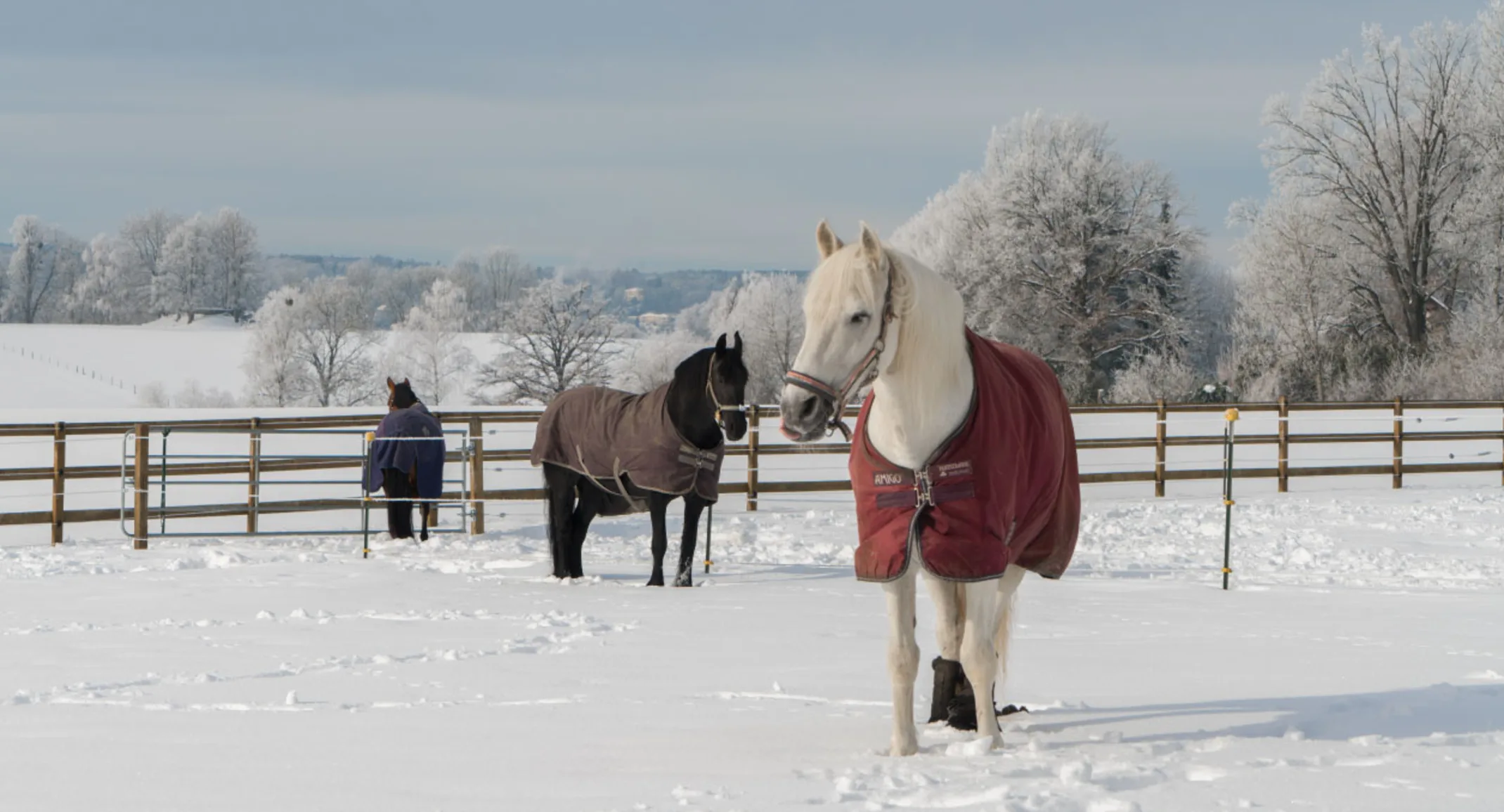Blanketing
General

As autumn fades into winter, the weather has been steadily getting colder. In response, our horses have been growing thick winter coats. That is nature’s way of protecting them from the elements. Horses with normal winter coats and access to a three-sided run-in shed have no need for winter blankets. Their own hair is adequate protection. In today’s modern horse society, though, it is unusual to see horses turned out in the winter without blankets. But many times, this is not the best situation for the horse.
Horses that have their normal, thick winter coats are comfortable in temperatures down into the 20s. At those temperatures, they do not need to wear a blanket because the warm air trapped under their thick haircoat keeps them warm. If they are blanketed above these temperatures, they will be prone to sweating. A horse that sweats underneath a blanket is likely to get chilled once the temperature drops lower and the sweat begins to dry. In addition, the sweat under the blanket will make the horse more likely to get skin conditions such as rain rot. If you do not work your horse in the winter (and therefore don’t mind that he’s crusted with mud) and he has adequate shelter, there is no need to blanket him.
On the other hand, horses that are worked regularly and sweat when they work might benefit from having some degree of a body clip. This allows the sweat to dry much more quickly so that the horse does not become chilled as he dries. Once he is clipped, though, it is imperative that he wears a blanket whenever the temperature drops below the 50s. With his insulating hair removed, he is no longer capable of keeping himself warm without some assistance.
To prevent uncomfortable conditions from developing in blanketed horses, it is recommended that the blanket be removed once daily so that the horse can be groomed and checked over. Blankets that are not properly fitted can cause many problems, including rubs, pressure sores, and generalized body soreness. A blanket that restricts the horse’s movement can actually cause lameness. Consult with the blanket manufacturer on the proper way to measure your horse to ensure that you purchase the right size blanket. The ideal blanket is waterproof and breathable so that the horse is protected from wet weather and is less prone to sweating under the blanket.
Michelle Egli, DVM Delmarva Equine Clinic
